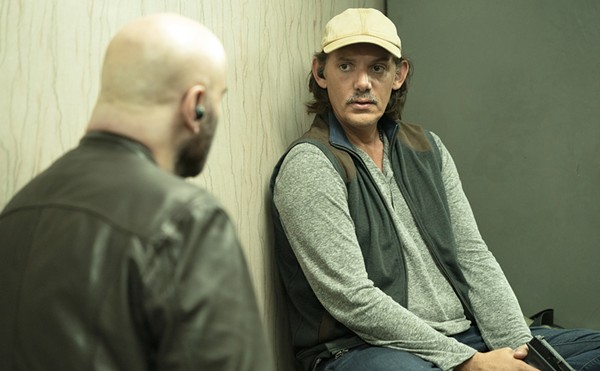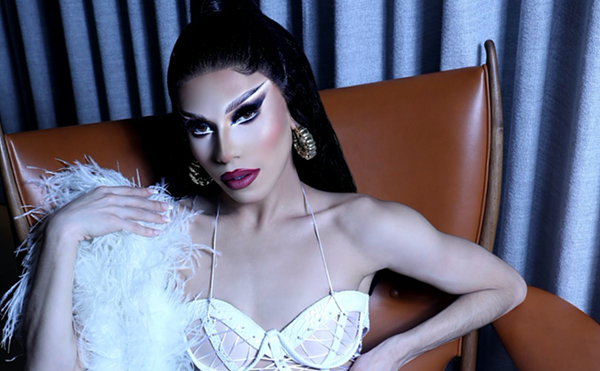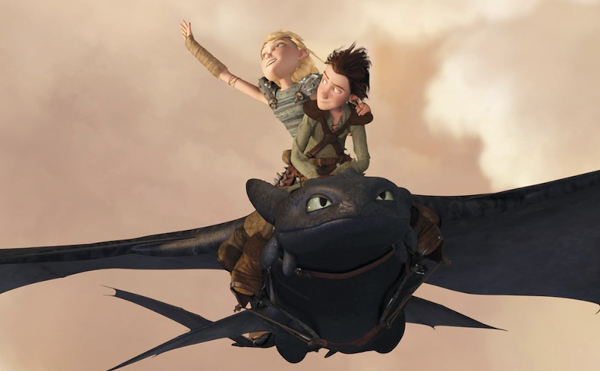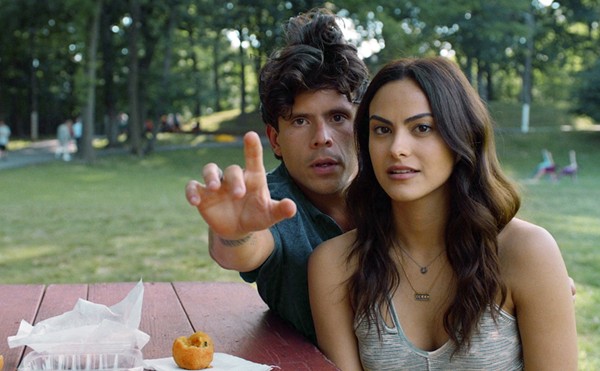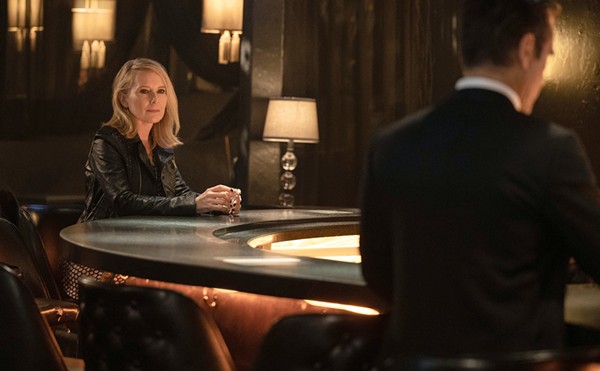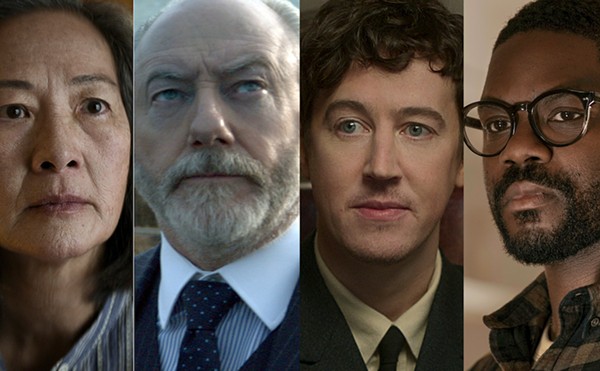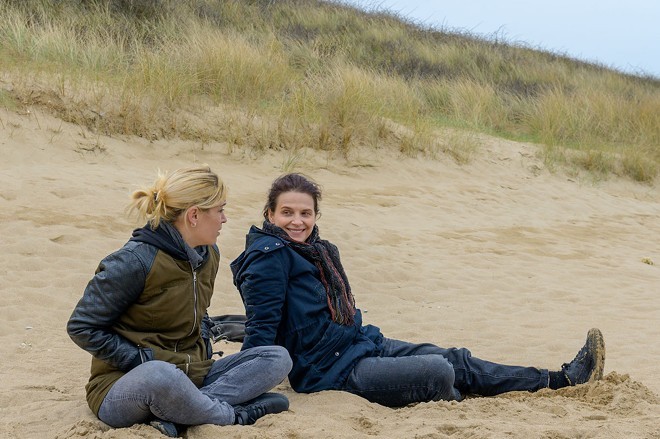
Directed by Emmanuel Carrère. Written by Emmanuel Carrère and Hélène Devynck, based on a book by Florence Aubenas. Opens in select cities August 25.
Freshly divorced and effectively destitute, former homemaker Marianne (Juliette Binoche) arrives in the northwestern French coastal city of Caen seeking a fresh start. She haunts employment offices and job fairs, looking for an employer who will take a chance on a middle-aged woman with a 23-year gap in her résumé. There’s only one option for someone in her position: part-time, minimum-wage work as a cleaning woman. She proceeds awkwardly through her government-assisted job training and a succession of miserable early postings, mopping floors and scrubbing toilets in the wee hours for hostile, ungrateful clients. The jobs change week to week, but her fellow cleaners seem to be drawn from a common pool of hard-luck local women. Their ages and circumstances vary, but all of these workers are broke, exhausted and unable to spare much time for their partners or children.
Marianne presents her situation as similarly precarious, but this is a deception. She is, in fact, an investigative journalist, working undercover to shine sunlight on the reality of France’s ongoing labor crisis, a late-capitalist cluster jam of poverty wages, grueling conditions and chronic underemployment. Hoping to develop her embedded experiences into a book, she fully commits to the bit, cutting off all contact with her family, friends and colleagues in Paris and living on her meager cleaning income. However, there is an intrinsic tension in her masquerade, quite apart from her anxiety at being found out: She engages in this drudgery by choice, and, unlike her co-workers, she can return to her bourgeois “real” life at any time.
Between Two Worlds is loosely adapted by Emmanuel Carrère and Hélène Devynck from journalist Florence Aubenas’ prize-winning non-fiction book Le Quai de Ouistreham. The film is the third feature directed by the multi-hyphenate Carrère, and the first since his 2005 international breakout The Moustache.
Compared to that Kafka-esque psychodrama, Between Two Worlds is a relatively straightforward, socially conscious picture, one that recalls the bleak working-class portraiture of British filmmaker Ken Loach (I, Daniel Blake; Sorry We Missed You). Other than Binoche, the performers in Carrère’s film are all non-professionals, and they acquit themselves quite well opposite one of France’s greatest living actors. This is particularly the case with Hélène Lambert, who portrays Chrystèle, an intense and hard-bitten young woman who naturally draws Marianne’s eye. The two eventually strike up a friendship, one that Marianne deludes herself into believing can survive her muckraking deception.
It's through Chrystèle that Marianne lands a gig cleaning the France-to-Britain ferry in the nearby port of Ouistreham. It’s steady but brutal work, a marathon of vacuuming, scrubbing and sheet-changing that must be completed in the 90-minute window between arrival and departure. The cross-Channel ferry will be a familiar setting for fans of Catherine Breillat’s excellent 2001 erotic noir Brief Crossing. This adds a metatextual twist to the sensation that Between Two Worlds is peering behind the curtain of modern French society, allowing hard-working, normally unrecognized laborers to stand in the spotlight, however briefly.
Of course, Ken Loach, for all his miserablism, is resolutely focused on poverty’s absurd cruelties and the flawed characters who muddle through such tribulations. In Between Two Worlds, the story’s investigative conceit makes Marianne the star of the story. Accordingly, the more substantive day-to-day struggles of Chrystèle and the other workers ultimately feel secondary to the journalist’s inner turmoil.
To Carrère’s credit, this may be the point. The film regards Marianne’s project with ambivalence, critiquing her do-gooder vanity and the broader problem with treating “awareness” as a commodity, one that requires inflicting deception and humiliation on the very people it aims to elevate. Regardless, the preoccupation with Marianne’s conflicted conscience ends up taking up space that would otherwise be devoted to the textured depiction of the grinding hardships (and fleeting joys) of Caen’s invisible janitorial workers.
Between Two Worlds never finds a way to satisfyingly resolve its disparate identities: a character drama about a woman’s well-intentioned deception; a gritty, ground-level depiction of insecure wage slavery in contemporary France; and an equivocal exploration of the ethics and politics of covert journalism. The film does eventually settle on Chrystèle’s furious, embarrassed sense of betrayal as its central emotional pillar once Marianne’s lies begin to unravel. Mathieu Lamboley’s urgent and haunting electronic score underlines the impression that Binoche’s journalist is hurtling towards a momentous test of her values and loyalties, one that won’t necessarily cast her in a sympathetic light.
Binoche is the kind of actor who seems to possess her own reality-warping gravitational field, and her prowess is discernible even when the material is flimsy. (Okay, maybe not in Ghost in the Shell.) Between Two Worlds gives her a performance about a performance, a fittingly juicy role that’s also half a step removed from the characters she typically portrays in French dramas. Marianne is a passive observer and chronicler, and she lacks the brittle, voluble edge that so often characterizes Binoche’s 21st-century performances. Yet there’s a taut dramatic pleasure in watching Binoche and Lambert play off each other. Marianne occasionally says or does things that subtly betray her professional-class background, and the sideways looks that Chrystèle gives her suggest that she senses something off about her new friend. Their interactions give Carrère’s feature the boundary-blurring psychological tension of an undercover spy or police drama. What is real here, and where does it all end? In tears, of course.
Subscribe to SA Current newsletters.
Follow us: Apple News | Google News | NewsBreak | Reddit | Instagram | Facebook | Twitter| Or sign up for our RSS Feed




